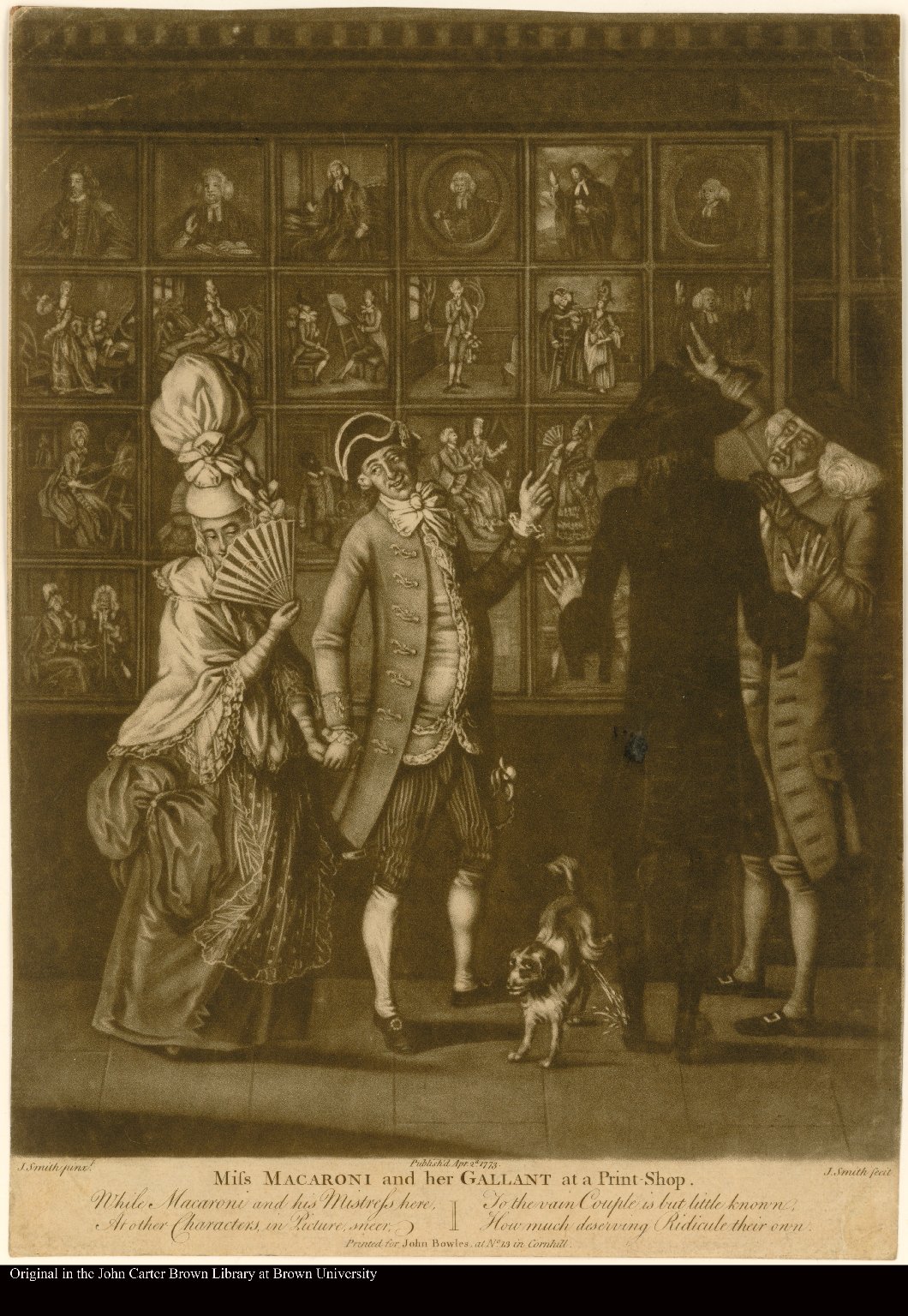Admittedly, as an eighteenth-century religious historian, I probably enjoyed the lecture more than others in the audience. Based on the title, I expected Bruce to tackle the traditional debate between free will Arminians and deterministic Calvinists, but instead most of his talk provided an aesthetic analysis of evangelical thought using music, and, particularly, art. He dissected the paintings of Sir Joshua Reynolds and the music of Handel, providing one of the most comprehensive and ambitious summaries of Methodist thought that I have ever heard. One of my favorite images that Bruce talked about was "Miss Macroni and Her Gallant at a Print Shop" (see below), which shows some of England's elites making fun of the portraits of William Romaine, George Whitefield, and John Wesley (among others) while a dog is pissing on one of the observer's shoes.

Another illustration came from James Hervey's Theron and Aspasio, an incredibly popular book by one of the Oxford Methodist "Holy Club" members, who wrote the book in the form of a dialogue between two men who debate the value of Calvinism, and especially the subject of imputed righteousness. If you are interested in learning more about Hervey and Theron and Aspasio, please take a look at my chapter on "Eloquent Calvinism" in Early Evangelicalism: A Reader.
Hervey was a Calvinistic Methodist who intended to write a polite work defending Calvinism for those with refined taste. And although very popular, and going through multiple editions, Theron and Aspasio was not received well by his friend John Wesley. Rather than go into the specifics of Wesley's intense debate with Hervey, allow me to refer you to my article, "John Wesley's Conflict with James Hervey and Its Affects in Scotland," published in 2012 in the Journal of Religious History. I was amazed at Bruce's insight from reading Theron and Aspasio. It is not an easy book to make it through in its entirety, but he was able to point out some very interesting details, such as the presenting of doctrine as a work of art.
I was sorry to have missed the end of the Colts game yesterday, but it was worth it to have attended Bruce's lecture.
No comments:
Post a Comment